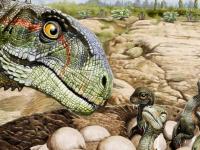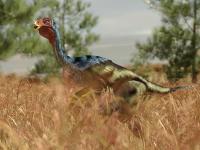Scientists Have Unraveled the Secret of the Preservation of Dinosaur Bones

According to the study, charred toast and preserved dinosaur bones have in common: a chemical that turns the original proteins into something new. This process will help to understand how the cells of the soft tissue remains of dinosaurs preserved hundreds of millions of years.
The question of preservation of fossil soft tissues in the bones of dinosaurs long been discussed among researchers. Hard tissues such as bones, eggs and teeth, very well maintained, and soft, — the blood vessels, cells and nerves contained within solid tissue is more delicate and considered, after the death of the body decompose very quickly, within approximately four million years.
However, dinosaur bones are much older than about 100 million years old, and sometimes they remain in organic structure. Various attempts to resolve the paradox was not given a definitive answer, but scientists from the universities of Yale, Brussels and Bonn, as well as the American Museum of natural history closer to solving this mystery. The results of their study published in the journal Nature Communications.
“We are committed to understanding fossils of proteins, examined 35 specimens of fossil bones, egg shells and teeth, in order to understand whether they maintain the protein soft tissues, their chemical composition and to determine under what conditions they managed to survive for millions of years,” says Jasmina, Wiman (Jasmina Wiemann), the study’s lead author.

The researchers found that soft tissue is preserved in the samples oxidative environment, such as sandstones and shallow marine limestones. The soft tissue was converted into advanced glycation end products and lipid peroxidation (Advanced Glycoxidation and Lipoxidation end products — AGE and ALE), which are resistant to disintegration and destruction. Structurally, they are comparable with chemical compounds that turn dark bark on toasted toast.
AGE and ALE are characterized by a brownish color, which stains containing bones and teeth of dinosaurs. These compounds are hydrophobic, i.e., resistant to water and have properties that protect them from bacteria.
Scientists decalcified the fossil by applying combinational Microspectroscopy – non-destructive method for the analysis of both inorganic and organic sample – using existing soft tissue fossils. During this process, the laser energy directed to tissue, causes molecular vibrations, which are spectral traces for present chemicals.
“Our results show how chemical change explains the preservation of these soft tissues and determines the type of environment in which this process occurs. The main thing is to determine how the parameter settings in the area where this saving is likely to occur that will expand the evidence base of biology and ecology of ancient vertebrates,” says study co-author Derek Briggs (Derek Briggs), emphasizing that the study first of all, allow us to point to where the soft tissue can be found preserved in fossil bones, including sandstones, dunes, and shallow marine limestones.
Source: https://koztimes.com








